Distinguished Critique: Doc Savage: The Man of Bronze Review
This "modern" take on a pulpy hero delivers action and adventure galore, obscuring the bronze sheen of a fairly flat central protagonist
—by Nathan on August 17, 2025—
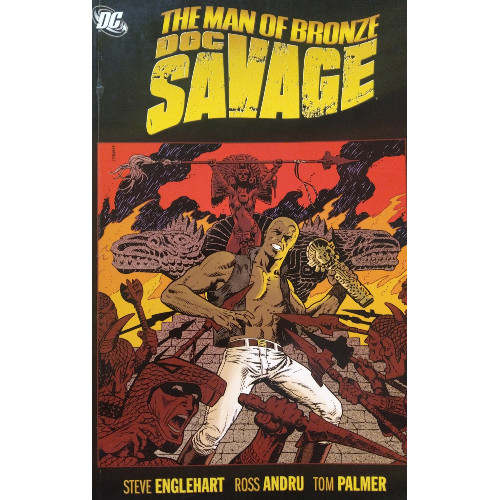
Before the Man of Steel, there was…the Man of Bronze!
Which, given bronze has a weaker tensile strength than steel, doesn't sound nearly as impressive when you say it out loud.
Regardless, before Superman graced the newspaper page, the so-called "world's first superhero" popped up in pulp magazines in the early 30s, his adventures soon featured in paperback novels and comic books. Clark Savage Jr., raised by his father and a group of scientists in mind and body to almost superhuman proportions, is a do-gooder and adventurer who, according to Stan Lee, had some amount of influence on how future superheroes were developed. Nicknamed the "Man of Bronze" for his tanned skin, the guy is basically everything you could want in a hero. Master martial artist? Check. Photographic memory? Absolutely? Brilliant inventor and scientist? Why not? He's got a metal in his name like the Last Son of Krypton, but the guy seems more like a precursor to a certain Dark Knight Detective!
It shouldn't surprise anyone to learn that both Marvel and DC, powerhouse publishers of superheroes themselves, wanted to get their hands on the guy considered the gen-u-wine progenitor of the modern-day costumed crimefighter. Marvel, from what I can tell, beat DC to the bronze-knuckled punch, publishing an eight-issue, full-color series in 1972. They later published a black-and-white magazine series, which I do have in trade as well and may review at a later date, but we're talking about that first series today.
The reason this volume is under "Distinguished Critique" is because DC eventually gained the publishing rights (for a time, at least) to Doc and produced trade volumes containing not only this series but the black-and-white publications and some of their own original material as well. As a result, none of these reprinted issues' covers carry a "Marvel" banner across the top, yet interestingly, they all take place in the 616 universe, meaning this is the same Doc Savage who would later team up with Spidey and the Thing.
But no Marvel heroes appear in this volume…and for good reason. These eight issues aren't original stories but are instead adaptations of four Doc Savage novels written by Lestern Dent, credited under the name Kenneth Robeson, thus predating characters such as Spider-Man. No Peter Parker pops up to snap the Man of Bronze's photo, and heck, I might go so far to say that, instead of photos, the only "snapping" happening here are of bad guy bones…and maybe a fur-lined jaw or two.
Doc Savage: The Man of Bronze
Writers: Steve Englehart, Roy Thomas, Gardner Fox, and Tony Isabella
Pencilers: Ross Andru and Rich Buckler
Inkers: Jim Mooney, Ernie Chan, Tom Palmer, Frank Giacoia, Frank Springer, Jack Abel
Colorists: Tom Palmer, Jean Izzo, and George Roussos
Letterers: John Costanza, June Braverman, George Roussos, and Tom Orzechowski
Issues: Doc Savage #1-8
Publication Dates: October 1972, December 1972, February 1973, April 1973, June 1973, August 1973, October 1973, January 1974
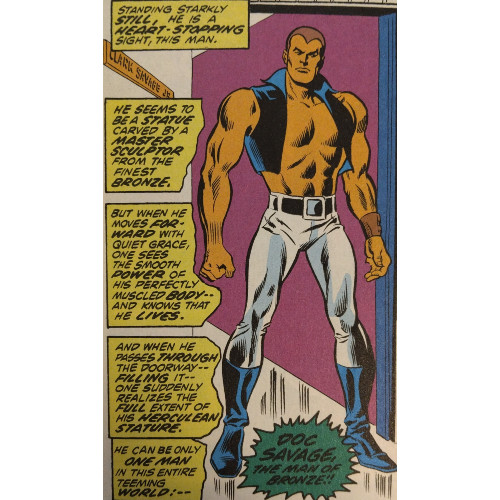
There are three different ways, I'd wager, you can read this volume, and I'll note the merits of each method.
First, you can read these as adaptations of four pulpy Doc Savage novels, particularly if you're familiar with those stories, and see these issues in a compare/contrast sort of lens.
Second, you can read these as straightforward comic adventures, knowing they're adaptations but perhaps being unfamiliar with the original stories, and breeze through them as the four-color comic narratives they are.
Third, you can read them as homages to a hero of yesteryear who influenced the world of tomorrow and use your peepers to spot all the ways in which Doc Savage impacted the emergence of the modern superhero.
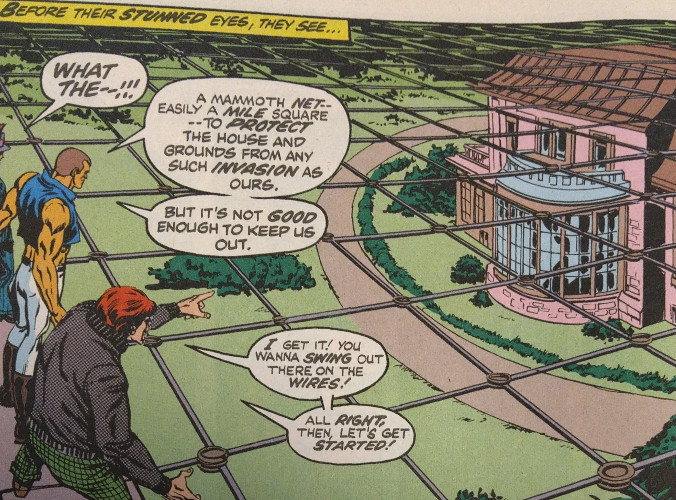
These lenses are not strictly incompatible; the first two may not work so well together, but many readers would be able to combine the third perspective with the second or the first. For anyone reading this review interested in whether they should give this volume a shot, I encourage you to combine some of those perspectives should you find a copy of this volume out in the wild.
I am among this volume's readers who are not at all knowledgeable of the original Doc Savage material. I picked this up because of a growing interest in modern interpretations of classic pulp heroes, such as The Spirit, wanting to see how somewhat more recent ("somewhat" being "at least the 70s onward," I suppose) adaptations or versions of the characters worked with evolving standards of sequential storytelling. I wanted to see, for this volume specifically, how the likes of Roy Thomas, Steve Englehart, and Rick Buckler handled the Man of Bronze.
The answer, I guess, is…fine?
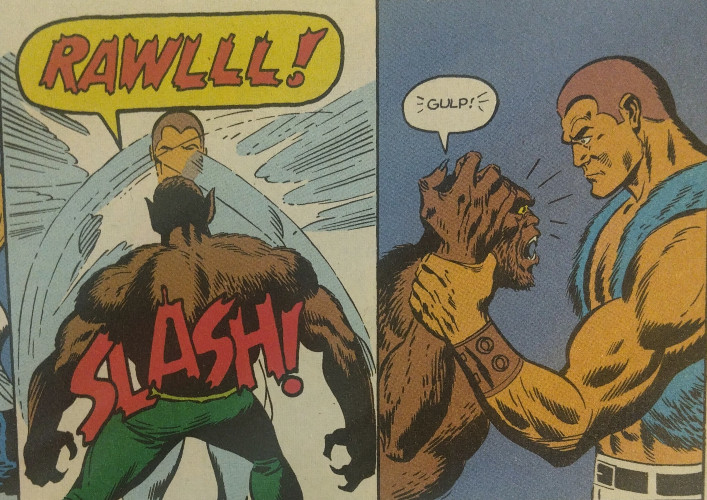
The difficulty with this volume is that it consists of adaptations of books I've never read, so I found myself waffling between whether to grade the volume on the stories themselves or how well the character felt in the four-color space of "the Marvel method" of storytelling. For whatever weaknesses exist, I wasn't sure where to put the blame, either on Lester Dent or Thomas and Company. So I have decided to base my opinions on the merits of the stories told in this specific medium, regardless of how faithfully adapted they are from the Doc Savage novels.
Savage, as a character, is quite a bit like Superman in that he comes across as very prototypical. Superman is your boilerplate hero with boilerplate powers: strength, flight, invulnerability. Savage, with all his know-how, feels like the template character you'd find in these kinds of stories. You want a cool pulp hero to inspire kids and adolescents? Well, he's gotta be smart and strong! He's gotta know martial arts! And he's gotta be rich so he can take the fight to criminals the world over!
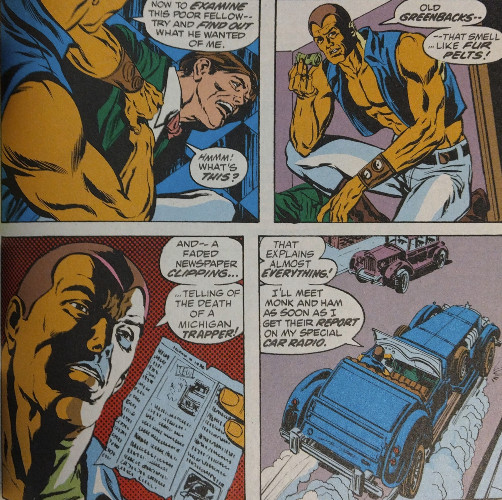
This is the material our creators find themselves working with, and they do an okay job with it. Savage, being so typical, exudes only the bare minimum of personality, his characteristics based on how smart and awesome he is. He's not given many moments to ponder his life choices or stew over his history, save for a minor family mystery I wish had been given more attention. Instead, we get to know Savage through how well he overcomes problems, usually through his fists. Yeah, he's a smart guy, and he does display his intelligence, but he does a heckuva lotta punching with those brass-knuckle hands of his And when he needs to think through a problem, he's usually already devised a plan in advance, like wearing a vest that happens to be bulletproof or feigning unconsciousness when it suits him. He may be brilliant, but coincidence appears to be one of his greatest powers.
Again, I don't know if this is how the novels handled him, but whatever complexity may exist with the character is taken and boiled down to its base components. To his credit, Doc is a staunch defender of decent principles, including using his brainpower and brawn to "do right to all and wrong to none," as he says. Good ideals for anyone to follow, certainly, and Doc definitely lives up to those principles. He doesn't face the crossroads that other super-guys encounter or cross the lines morally ambiguous anti-heroes dance between on a daily basis. If you're looking for an upright fellow, you found him. He's incredibly wholesome, kind of in the same way you want to see Superman portrayed. This wholesomeness isn't a slight against him from me, but it does mean his character is left a little fallow.
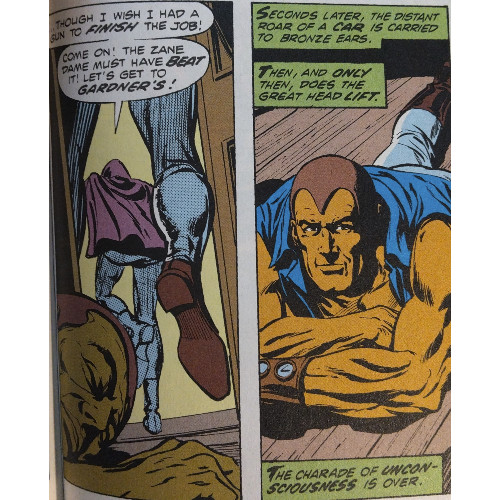
Surrounding Savage are a team of devoted friends, and these men are where we get some more personality and characterization. For example, the ape-like Monk is a lumbering fellow, his size and appearance belaying his great intelligence; Long Tom is a skinny guy who can lick just about anyone in a fight; and Renny is a morose man who's happiest smashing his fist through walls. They're an odd assortment of people, but what they possess are seeming contradictions, like the thin man who's a real fighter or the Neanderthal-looking guy who may be the smartest of the bunch. These traits give each man some personality, particularly when they interact with each other, providing some fun cajoling at moments. They feel more human, at least, than the tanned man who leads them.
Flat Doc's character may be, but his adventures are well-rounded, much like the world he travels around (sorry, flat-earthers). This is where most of the fun found in the volume comes from, as Savage and his gang face assassins from an ancient culture, thieves using a high-powered submarine, literal giants, and a killer werewolf. Each story is two issues long, meaning they never overstay their welcome, and each tale's premise is entertaining enough and allows for decent variety. From the temples of an ancient South American society, to regal estates, to a snowy wasteland, to the trappings of a modern metropolis, Savage and his crew do a lot of traveling, with our artists developing detailed backgrounds and hopefully enjoying the different kinds of vehicles our band of merry men use in their travels. The characterization may be lacking because of the ever-changing scenery and the constant action–car chases! A submarine battle! Explosions! Electrified netting! A death-defying high-wire walk!–but the pace here is frenetic. If you like action set pieces, you'll find plenty to enjoy here.
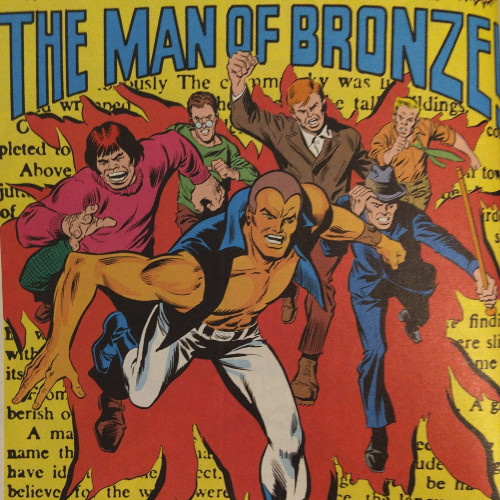
Savage's influence on later heroes is apparent, even if you're willing to squint a little to make the connection. I don't know if his high rise headquarters influenced the Fantastic Four's Baxter Building, but he does come equipped with a homebase like other heroes would use…even better, he has an arctic "Fortress of Solitude" (yes, named exactly like that) he occasionally retires to for study! As I noted, his mastery of martial arts and science makes him feel like a spiritual predecessor to Batman, and the eventual inheritance he finds from his dear old dad doesn't damage that comparison to Bruce Wayne any. As mentioned, Savage feels prototypical, the first of a new breed of character, a bit of wish fulfillment for anyone who's ever daydreamed about being incredibly intelligent, athletic, tough, and rich all at once while occasionally bopping bad guys and seeing the world. Savage crawled through a bit of development so later heroes could walk proudly and be bombarded with tragic backstories, dead parents, alcoholism, selfishness, and all manner of human emotions and motivations for us to identify with as we read.
I suppose I've been a little "savage" myself in my estimation of this volume. There are better stories out there, and I'm sure there are more enjoyable Doc Savage narratives that I could one day find. Again, any weaknesses I indicated could be from either the source material or an inability to adapt the character adequately. I just don't know. Savage is not the most interesting character I've ever read in a comic, but our creators strive to make up for it through the colorful friends he surrounds himself with and the litany of insane adventures they endure. If pulpy action romps are your kind of fun, maybe you'll be more tenderhearted towards this volume, but if you're hoping to find "character" and pair that with the words "driven" or "defining," I'd suggest digging elsewhere. I'd be hard-pressed to say this volume even podiums in that category, let alone nabbing the medal its title character shares a name with.